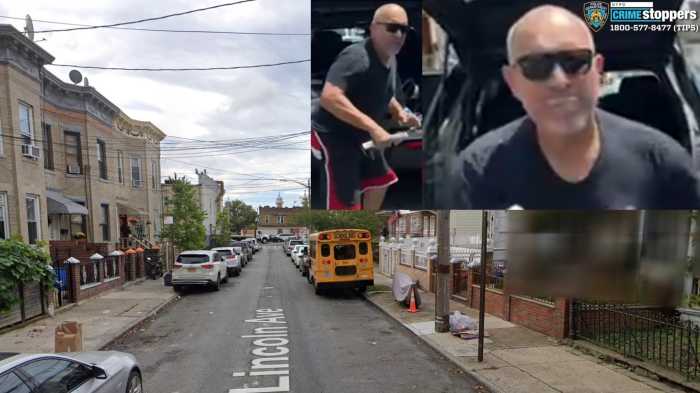BY KAITLYN MEADE | Some Southbridge Towers residents came together last week to discuss the future of the housing complex — a future some do not feel involved in. In the wake of Hurricane Sandy, many residents felt less secure about their ability to cope with future disasters. Others sought to discuss ongoing problems that had surfaced long before the storm.
On Nov. 20, the Southbridge Towers Shareholders Association held its second meeting in the apartment complex’s community room. The association, created a few weeks prior to Hurricane Sandy, attracted enough residents to pack the room at the first meeting, according association to chair Paul Hovitz, but last Tuesday there were only about 30 or so people.
Southbridge Towers’ 1,651 apartments are filled with middle-income shareholders, not tenants. The difference is that residents own shares of the complex, much like a corporation, and pay maintenance fees rather than monthly rent.
As such, they are supposed to have a greater say in the day-to-day governance of the facilities, according to Hovitz, who served on the board for 12 years. However, some shareholders feel that they are not being granted adequate input by their neighbors on Southbridge’s board of directors.
“The board holds open meetings, but the only things that they can query at the open meetings are those already on the agenda,” said Hovitz. “They’re lucky if they have a dozen shareholders attend the meetings now. People have been feeling they don’t have a voice or the opportunity to weigh in.”
Southbridge’s board of directors president Wallace Dimson said the board is “above reproach,” and that the majority of shareholders are sufficiently represented by their chosen delegates. “There is a reason this board had been elected for seven consecutive years,” he said. “That’s why we have elections.”
The board of directors is composed of 15 shareholder representatives, five of which are up for election each year and serve terms of three years. It also includes a representative from the New York State Division of Housing and Community Renewal (D.H.C.R.) — though, according to Hovitz, the representative rarely attends meetings at Southbridge.
At its first meeting, the association chose five issues for the association’s liaison, board member John Fratta, to discuss at the next board meeting.
The opening item on the list was a request for better communication, including a time during board meetings when residents could address topics that are not on the agenda. They also requested a monthly “Meet the Manager” night for shareholders to speak face-to-face with building managers.
The board of directors is not opening the meetings to unrelated comments, but in response to the requests, they did agree to hold quarterly Meet the Manager nights, with the first one scheduled for 6 p.m. on Wed., Dec. 5. The shareholders also petitioned to view “in-force” contracts, or contracts that had been approved and put into action under the supervision of the board’s office — something that was possible a few years earlier, according to Hovitz. But, after consulting with its attorneys, the board replied that making the documents publicly available would violate confidentiality agreements it has with its commercial tenants. The viewing rights of shareholders are limited to annual financial statements, minutes of meetings and lists of shareholders.
“The board has a judiciary responsibility that shareholders do not have,” said Dimson.
Shareholders can request to see confidential documents through the state’s housing department, he noted.
The complex’s parking arrangement also drew censure, with many members contributing stories of their own about their difficulties. Icon, which operates Southbridge’s parking garage, has furnished a number of residents with “floating spaces,” which means that residents’ cars are parked at whichever spots are available at a given time.
Specifically, the shareholders objected to cars being parked on the ramp, which makes entering and exiting the garage difficult. Hovitz proposed the creation of a garage committee to start looking into these and other problems facing the residents. Meanwhile, the board advised them to contact Southbridge management if they have trouble parking.
The residents have also been hoping for some kind of fitness facility in one of the ground-floor vacant spaces that are allotted to commercial tenants. Dimson reported that the board voted to begin negotiations with Martin Addo, a personal trainer who already runs a core conditioning class at Southbridge, on a multi-year lease for 850 square feet of space adjacent to vacant doctors’ offices in the interior of the complex. Though not visible from the street, the space is accessible from Fulton and Gold Streets. Addo plans to offer a mix of classes and training equipment that would be open to the public and include discounts for Southbridge residents if a deal is reached.
Of course, the most recent problem facing the residents is the devastation caused by Sandy. Upper-floor residents were concerned about mounting the multiple-story buildings in the dark, especially in the event of medical emergencies. “We have four towers here that go up; it was certainly very dangerous to climb up and down in the dark, especially because some people were carrying water in buckets and the water was spilling on the stairs,” said Hovitz.
Sylvia Meyers, a longtime resident of Southbridge, asked a question that was on everyone’s minds: “The last emergency we had — 9/11 — we were able to get generators. Why were we not able to get generators [this time]?”
“When we realized how bad the storm was going to be,” replied Fratta, “we tried to rent generators, two big ones like we had after 9/11, and we couldn’t get them.” Unlike in the aftermath of September 11, Lower Manhattan could not rely on generators loaned from Brooklyn or New Jersey, since those areas needed the generators for residents living in their emergency zones. Currently, alternative sources of power proposed for future emergencies have been set aside for further inquiry, since they lack sufficient research to be put into use, he noted.
The board was working on forming a Southbridge Community Emergency Response Team (CERT), much like those deployed by the city Office of Emergency Management during Hurricane Sandy. The board would also be updating the list of Southbridge residents who are especially in need of assistance in the event of another natural disaster.
The board will continue to take the association’s requests into consideration and invites shareholders to open board meetings, the next of which is on Thurs., Dec. 6. For more information, check the “resident information” section of southbridgetowers.com.



































